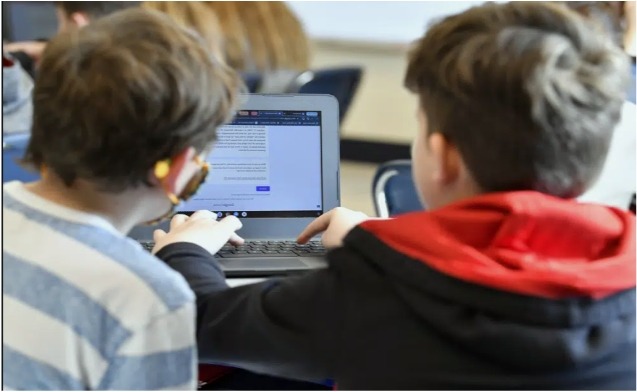ChatGPT in Schools and now shaping the students creativity, a fifth-grade classroom in Lexington, Kentucky, has taken a unique approach to teaching writing with the use of an artificial intelligence (AI) tool called ChatGPT. The tool is capable of generating everything from essays to haikus to term papers within seconds. It has alarmed teachers and prompted some school districts to block access to the site.
However, Donnie Piercey, who has taught for 17 years, has embraced the tool as a teaching aid, saying that his job is to prepare students for a world where knowledge of AI will be required. Piercey has pitted students against the machine in interactive writing games, but at the elementary school level, he is less concerned about cheating and plagiarism than high school teachers. His district has blocked students from accessing ChatGPT while allowing teacher access.
The topic of AI platforms and how schools should respond has attracted attention from hundreds of educators around the world. The Future of Education Technology Conference in New Orleans drew educators to discuss the issue of AI in classrooms.
Texas math teacher, Heather Brantley, gave a talk on the “Magic of Writing with AI for all Subjects,” in which she stated that the chatbot had the ability to make her sixth-grade math lessons more creative and applicable to everyday life. Although the platform is blocked for students, it is open to teachers at her school. She is encouraging districts to train staff to use the AI platform to stimulate student creativity and problem-solving skills.
ChatGPT, developed by OpenAI became a global phenomenon after its November 2022 launch, and rival companies including Google are racing to release their own versions of AI-powered chatbots. Although the advent of AI platforms is both “revolutionary and disruptive” to education, Steve Darlow, the technology trainer at Florida’s Santa Rosa County District Schools, envisions teachers asking ChatGPT to make “amazing lesson plans for a substitute” or even for help grading papers. Darlow acknowledges the futility of a ban that today’s tech-savvy students can work around.
Piercey’s class used the AI platform to create short plays, which the students edited, rehearsed, and then performed. One of the plays involved a class computer that escaped, with students going on a hunt to find it.
The play’s creators were impressed with the creative ideas that the chatbot introduced, but they also appreciated how Piercey urged them to revise any phrases or stage directions they did not like.
Now OpenAI’s ChatGPT in Schools and educators acknowledge that the AI platform is here to stay and the importance of preparing students for a world where AI knowledge will be required. They believe that teachers should embrace AI tools, such as ChatGPT, to stimulate student creativity and problem-solving skills.
Although the advent of AI platforms but have some limitations as well as both “revolutionary and disruptive” to education, banning them is futile, as tech-savvy students can easily work around such a ban.

